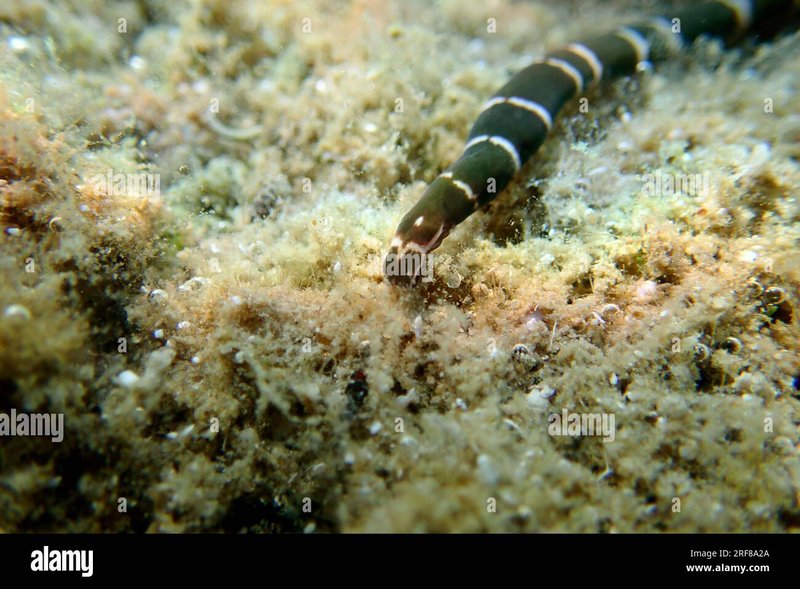
Bootlace worms belong to the group called *Lineus*, and they’re known for their incredible lengths and unique adaptations. You might be wondering what makes them so special and how they fit into the grand scheme of ocean life. Let me explain. Bootlace worms contribute to nutrient cycling, serve as prey for various marine animals, and even help maintain the health of their habitats. Understanding their role can give us a deeper appreciation for the intricate balance of marine ecosystems.
What Are Bootlace Worms?
Bootlace worms are fascinating creatures found predominantly in the shallow waters of the North Atlantic and some parts of the Southern Hemisphere. Belonging to a group of organisms known as ribbon worms, these long, slender beings can be quite colorful, often displaying vibrant shades of yellow, green, or red. Their bodies are soft, segmented, and can stretch or contract, allowing them to navigate through sand and mud with surprising ease.
One of the most mind-blowing aspects of bootlace worms is their remarkable length. While they can measure up to 30 meters, most adult bootlace worms are generally shorter, between 1 to 10 meters. However, their size isn’t just for show; these long bodies help them maximize their surface area for feeding and respiration. You could think of them as nature’s own spaghetti—flexible and adaptable, they thrive in various marine environments.
Another interesting feature of bootlace worms is their ability to regenerate. If they lose a part of their body, they can often regrow it. This capability isn’t just impressive; it’s a survival mechanism that allows them to adapt to their predatory and competitive ecosystem.
The Role of Bootlace Worms in Nutrient Cycling
Nutrient cycling is a crucial process in any ecosystem, and bootlace worms are key players in this game. They consume organic matter, such as dead plants and animals, as well as bacteria and microorganisms in the sediment. This consumption breaks down material and returns nutrients back into the ecosystem, enriching the soil and supporting various forms of marine life.
As bootlace worms digest this organic matter, they release byproducts that are rich in nutrients. These byproducts serve as food for other marine organisms, creating a continuous cycle of energy transfer within the ecosystem. Think of it like a buffet in the ocean—bootlace worms break down the food so that plenty of other creatures can feast.
Moreover, their presence can improve water quality. By breaking down organic debris, bootlace worms help reduce harmful substances that can accumulate in aquatic environments. This process promotes a healthier habitat for fish, coral, and other marine species, ultimately benefiting the entire ecosystem.
Bootlace Worms as Prey
In marine ecosystems, every organism serves a purpose, and bootlace worms are no exception. They are an important food source for various predators, including fish, crabs, and even some types of birds. This predator-prey relationship highlights the interconnections within the marine food web and emphasizes the importance of each species, no matter how small or seemingly insignificant.
For instance, certain flatfish species actively hunt bootlace worms as part of their diet. The long, slender shape of bootlace worms can make them an easy target for these bottom-dwelling predators. By serving as a food source for larger animals, bootlace worms help sustain various populations within the ocean.
Unfortunately, the decline of bootlace worms in some areas can have ripple effects on the entire ecosystem. If their numbers drop, it could lead to less food for predators, which could then affect the balance of the ecosystem they inhabit.
Bootlace Worms and Habitat Formation
Bootlace worms also contribute to habitat formation in marine environments. Their burrowing behavior helps aerate the sediment, creating spaces that allow water to flow more efficiently through the seabed. This aeration is essential for the growth of beneficial microbes and plants, which, in turn, support larger marine organisms.
In areas where bootlace worms are abundant, you’ll often find healthier ecosystems characterized by diverse marine life. Their burrowing creates a unique microhabitat, increasing biodiversity and fostering resilience against environmental changes.
Moreover, bootlace worms can help stabilize sediments. By anchoring themselves with their bodies, they prevent erosion and contribute to the overall health of their environment. It’s like living architecture, helping to maintain the structure of the ocean floor.
The Importance of Conservation
Many people might not realize the significance of bootlace worms, but protecting their habitats is vital for maintaining marine biodiversity. Unfortunately, pollution, climate change, and habitat destruction pose threats to these creatures and their ecosystems. As they fall victim to environmental changes, many of the benefits they provide to the marine environment can also diminish.
Conservation efforts focused on preserving marine habitats can help ensure the survival of bootlace worms and their roles in the ecosystem. Initiatives like reducing plastic pollution, regulating fishing practices, and protecting marine protected areas are essential for maintaining the health of these underwater worlds.
By raising awareness about bootlace worms and their ecological importance, we can encourage a greater appreciation for the often-overlooked creatures that contribute to our oceans’ balance.
In a world where we often overlook the smaller details of nature, bootlace worms are a reminder that every creature—no matter how long or slimy—plays a significant role in the intricate web of life. From nutrient cycling to serving as prey and contributing to habitat formation, these worms are crucial players in their ecosystems. Their unique adaptations and behaviors not only enrich marine life but also highlight the delicate balance that supports our oceans.
So next time you think about marine life, remember the bootlace worms and their incredible contributions. Protecting their habitats and promoting conservation can help ensure these fascinating creatures continue to thrive in our oceans. After all, every part of an ecosystem matters, and that includes the surprisingly important bootlace worm!

